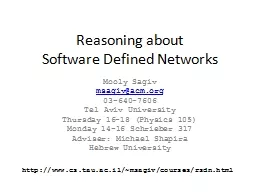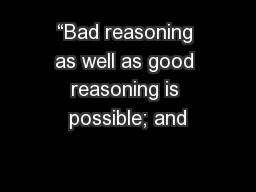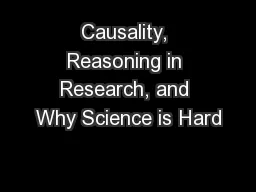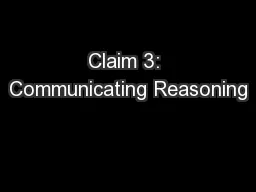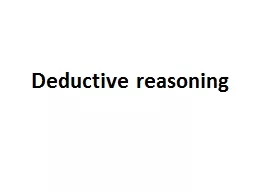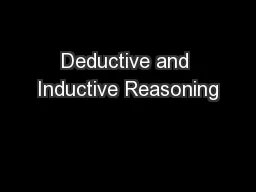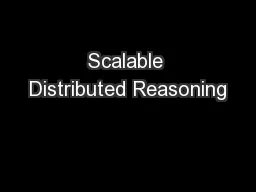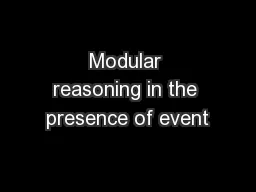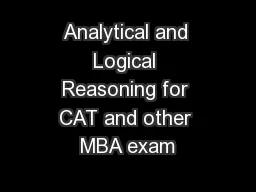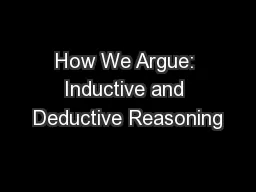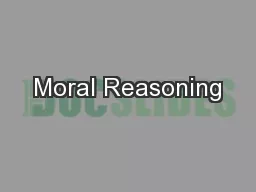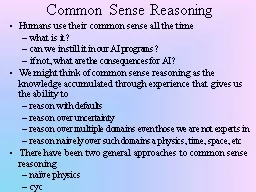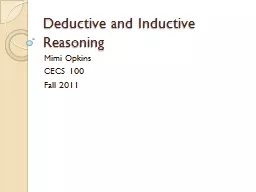PPT-Reasoning about
Author : liane-varnes | Published Date : 2017-09-09
Software Defined Networks Mooly Sagiv msagivacmorg 036407606 Tel Aviv University Thursday 1618 Physics 105 Monday 1416 Schrieber 317 Adviser Michael Shapira
Presentation Embed Code
Download Presentation
Download Presentation The PPT/PDF document "Reasoning about" is the property of its rightful owner. Permission is granted to download and print the materials on this website for personal, non-commercial use only, and to display it on your personal computer provided you do not modify the materials and that you retain all copyright notices contained in the materials. By downloading content from our website, you accept the terms of this agreement.
Reasoning about: Transcript
Download Rules Of Document
"Reasoning about"The content belongs to its owner. You may download and print it for personal use, without modification, and keep all copyright notices. By downloading, you agree to these terms.
Related Documents

